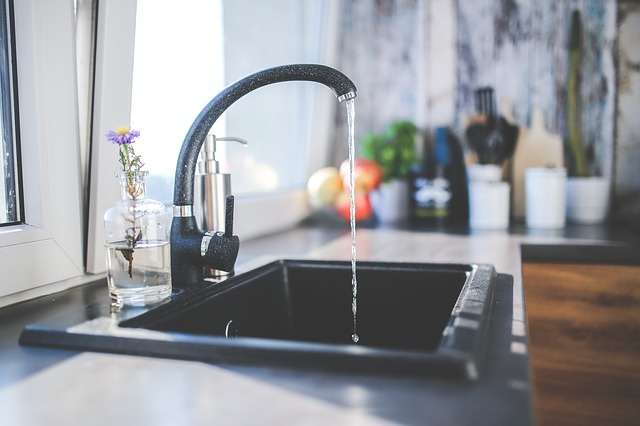When you build a sustainable home, you will satisfy your present needs while you preserve the planet for the next generation. To do this, you need to make deliberate choices about your use of energy, water and appliances. You must also ensure that you use natural or green materials that come from renewable or reusable sources. If you want to enjoy the benefits of a “green” home, here are some valuable ideas to get started.
1. Reduce Your Energy Consumption
Reducing your electricity bills can help you to put substantial savings in the bank every year. Simply remember to:
- Unplug all appliances that are not in use
- Replace very old appliances like refrigerators and dishwashers with modern low-energy models
- Use LED lighting instead of CFL or incandescent bulbs to reduce energy consumption on lighting by 75 percent or more
- Use a programmable thermostat
- Only wash a full load of clothes with an energy-efficient washing machine.
- Open your curtains wide during the day and enjoy the blessing of natural light.
2. Curtail Your Water Usage
Increase the water efficiency in your home by collecting rainwater and reusing some of your grey water like the water from the laundry. Replace old water-wasting fixtures like shower heads, faucets and toilets with new low-flow models. Get a professional to install on-demand hot water taps that will draw the hot water through the pipes only when you turn them on.

3. Plant A Sustainable Garden
You can plant a sustainable garden by using organic gardening methods and by conserving precious resources. Some of the best sustainable gardening methods include:
- Using compost to recycle and enrich the soil as well as to manage yard and kitchen waste
- Eliminating all toxic pesticides and chemical herbicides
- Using mulch to control the spread of weeds
- Growing native plants that are appropriate for your climate
- Designing your garden to protect the soil and conserve water
- Applying drip irrigation instead of wasteful water sprinkling
A sustainable garden will not only preserve the environment, but it will also help you and your family to live a happier and healthier life.
4. Use Green Natural Materials
To make your home more sustainable, use materials that have the following qualities:
- Rapid renewal: Bamboo is a type of grass and isn’t wood. It grows rapidly and can be renewed quickly. So you can use it for sustainable flooring.
- Renewable sources: Wood is also a good example of renewable material. Use wood as much as you can instead of synthetic materials especially when the wood comes from forests where planting, cutting and supply are well documented.
- Recycled or reused: You may use recycled components like flooring produced from recycled rubber. Some old doors may also be repurposed and reused to cover new door spaces.

5. Fix your roof
When you need to repair your roof or replace a large section of it, you can’t go wrong with “green” options. Choosing the right type of roof will also help to insulate your home and reduce energy bills over time. Some examples of modern, sustainable roofing that you can install include:
- Roof shingles made with recycled waste including wood fiber, rubber or plastic
- A green roof covered with vegetation and grass
- Solar roof shingles which produce electricity and heat up water.
6. Improve Your Insulation
Insulation is the barrier that stops heat from flowing in and out of your home. It keeps your house cool in summer and warm during winter. When your house is properly insulated, you will enjoy greater comfort throughout the year. Proper insulation of your attic, windows, doors, walls and ceiling can also reduce the money you pay for cooling and heating by half. Some of the types of insulation you should consider include:
- Blanket (batts and rolls)
- Concrete blocks
- Foam board
- Blown-in and loose-fill
- Reflective system
Some insulations, like the blanket and reflective system, can be handled as DIY projects while others require professional help.

7. Install Solar Panels
The benefits of installing solar panels now outweigh the costs. That’s why more homeowners are installing them and the total cost of panels has continued to reduce. Most solar systems pay for themselves in less than 10 years and continue to provide savings for many decades. Solar power comes from the sun which produces millions of tons of energy per day. It provides a sustainable source of power and does not require fossil fuels, generator maintenance or payment of utility bills. With solar panels, you can potentially shave off hundreds of dollars from your electricity bills annually.
With these tips, you can live safe in the knowledge that you have contributed to the reduction of your carbon footprint to preserve our planet. Start with the simple ideas and then move on to more demanding projects like replacing your flooring and roofing, creating a sustainable garden and installing solar panels.
- Replace very old appliances like refrigerators and dishwashers with modern low-energy models
- Use LED lighting instead of CFL or incandescent bulbs to reduce energy consumption on lighting by 75 percent or more
- Use a programmable thermostat
- Only wash a full load of clothes with an energy-efficient washing machine.
- Open your curtains wide during the day and enjoy the blessing of natural light.
Author Bio
 Theodora is a passionate blogger from Sydney and she is someone you would call an IT nerd. Also, she takes great interest in psychology and helping people deal with their mental and anxiety issues. Besides that, she loves martial arts and making houses beautiful.
Theodora is a passionate blogger from Sydney and she is someone you would call an IT nerd. Also, she takes great interest in psychology and helping people deal with their mental and anxiety issues. Besides that, she loves martial arts and making houses beautiful.


































